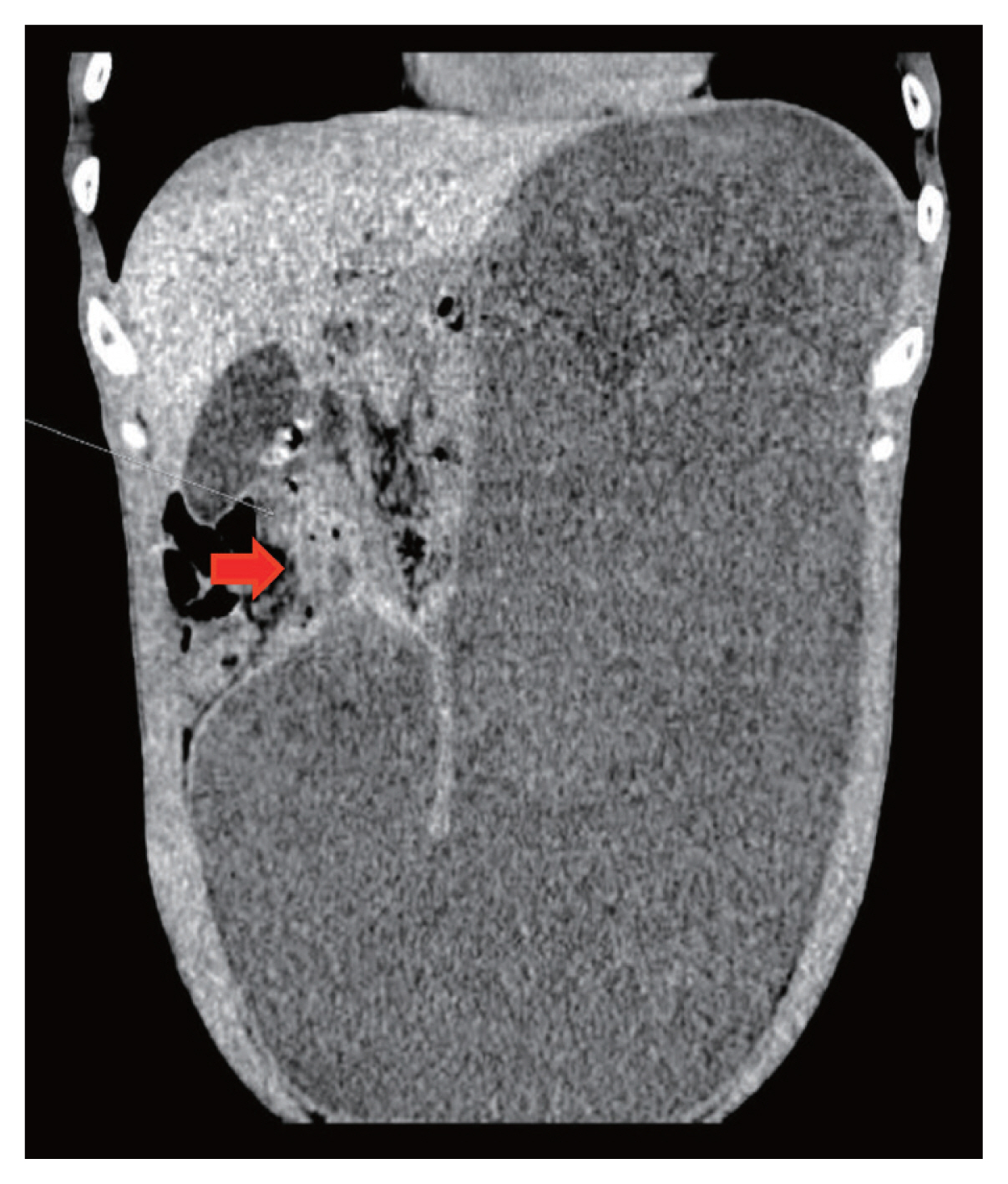A 52-year-old man presented with a chief complaint of increasing abdominal bloating and distension. His medical history was notable for cataract and glaucoma. He had no history of abdominal surgery and denied taking non-steroidal anti-inflammatory drugs. His abdomen was soft with moderate epigastric tenderness. Gastric peristaltic waves were noted at the proximal antrum. A succussion splash was heard on percussion of the abdomen indicating excessive fluid in the stomach. Computed tomography of the abdomen showed a remarkably dilated stomach with food content, as well as gastric outlet obstruction by hypertrophic pyloric stenosis after 48 hours fasting (Fig. 1). The upper gastrointestinal endoscopy confirmed retention of stomach contents and pylorostenosis complicated by ulcers in both the pyloric channel and duodenal bulb after application of a 2-day course of gastrointestinal decompression (Fig. 2A, B). C14 urease breath test was positive. The patient received subtotal gastrectomy, gastrojejunostomy, and side-to-side jejuno-jejunostomy, which was a better surgical treatment of gastric outlet obstruction complicated by pyloric channel and duodenal ulcers. There was no tumor in the peritoneal cavity. The histopathology confirmed chronic ulcer of mucosa with granulation tissue and fibrocyte proliferation (Fig. 2C). A diagnosis of gastric outlet obstruction by pyloric channel and duodenal ulcers was made and supported by radiological imaging of severe gastric dilatation. Acute massive gastric dilatation is considered as an extreme distention of the stomach occupying the whole abdominal cavity from the diaphragm to the pelvis and from left to right [1]. Acute massive gastric dilatation may lead to ischemia, necrosis, and perforation of the stomach [2]. Resuscitation and surgical treatment are urgently needed in that life-threatening condition [3]. The mortality rate may sharply increase due to incorrect diagnosis and delayed surgical treatment. The patientŌĆÖs postoperative recovery was uneventful. Gastroenterologists should be aware that gastric outlet obstruction by pyloric channel and duodenal ulcers may cause acute massive gastric dilatation.
 |
 |





 PDF Links
PDF Links PubReader
PubReader ePub Link
ePub Link Full text via DOI
Full text via DOI Download Citation
Download Citation Print
Print



